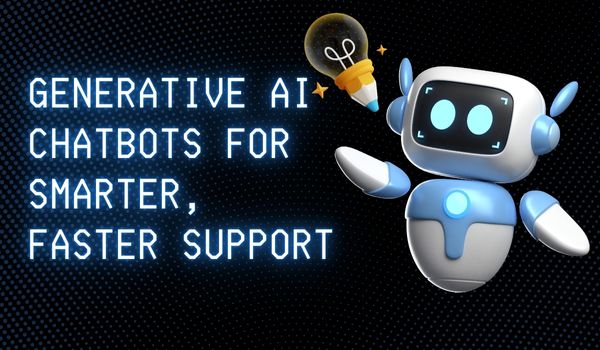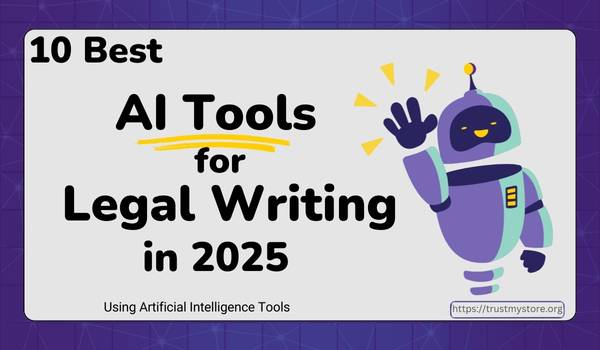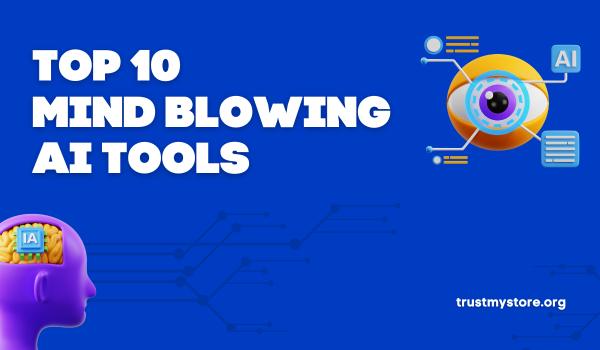Generative AI Chatbots for Smarter, Faster Support

As the technological advancements of the era continue, so do the customers’ needs and expectations. In the old way of thinking, this turned the customers’ services into quite a hassle for all parties. Customers are often left wanting more personalized or sophisticated responses, and businesses struggle to manage the avalanche of customer interactions. This is where AI chatbots emerge, transforming the entire contact experience for the customers and the providers. This piece examines the deep intrigue behind generative AI chatbots, where intelligent support metrics hardware for organizations small and large. By grasping how they operate, what they offer, and their potential moving forward, these tools can be used to better the customers and enhance the businesses as they reduce costs.
What Are Generative AI Chatbots?
But, in layman’s terms, a generative AI chatbot talks to you just like a human would because it can generate real-time content. It does this by integrating NLP and ML into its software. A generative AI chatbot can respond in an appropriate and situationally pertinent way to any advanced inquiry without relying on preset scripts or graphics. In other words, the bot possesses an open-ended response system free of rigid structures that impose conventional rules.
Generative models, particularly GPT, fuel these bots. Training this kind of model requires significant data, including conversations. Consequently, these devices require less effort to comprehend context and meaning.
In what way do generative AI chatbots operate?
Generative AI chatbots have a working mechanism that has three components, as highlighted below:
Natural Language Parsing: This is used to train the chatbot system, understand the user’s voice, and analyze intent, emotion, and other relevant aspects.
Natural Language Generation: This component assists the bot in generating responses whereby a pattern of speech that sounds natural if spoken by a human is selected.
Reinforcement Learning: Chatbots do not remain stagnant; thanks to user feedback and this feature, they are continuously trained for higher precision and effectiveness.
Combining all these features allows generative AI chatbots to not just respond to questions but recognize various shades of meaning in the questions and different contexts.
Unique features of generative AI chatbots
The generative AI chatbots also have various features that make them the perfect fit for current-day customer service. Below are some of the most impressive features.
(a) Improved customer interactions
Generative AI chatbots are quite sensitive and can personalize responses based on what was said in previous interactions with the customer. Such a level of personalization gives warmth and increases satisfaction, too.
b) Constant connectivity
With generative AI chatbots, support is guaranteed to customers whenever they need it without considering the working hours of any company.
c) Reduced Lauding Duration
As mentioned earlier, offering a response using AI takes seconds. This is important for driving customer happiness and loyalty.
d) Reduced operational costs
Automatic query handling through chatbots minimizes the need to maintain the number of customer support employees, thus saving costs significantly.
e) Scalability
The generative AI chatbots are very scalable, enabling them to perform millions of interactions simultaneously, which significantly benefits businesses prone to growth.
The Role of Natural Language Processing in Generative AI Chatbots
Generative AI chatbots should be able to work and understand natural language—in human conversations and even arguments—and generate such language when necessary. Nother Or:
Natural Language Processing (NLP) is what makes generative AI chatbots tick. Thanks to NLP, such bots can:
Place interactions in context.
Gauge the emotions of a user and respond adequately.
Analyze the language spectrum and locate different tones, such as an ironic remark or a response.
Instead of just hunting for keywords, bots fueled by NLP can offer AI chatbot interaction, which doesn’t feel forced.
Industry Applications of Generative AI Chatbots
As time passes, we see confirmation that generative AI chatbots are reshaping numerous industries. That’s how they work in different fields of activity:
a) E-commerce:
Generative AI chatbots guide users in searching for products, respond to questions, and offer alternative suggestions depending on the client’s preferences.
b) Healthcare:
Such chatbots help patients book appointments, check their symptoms, and receive answers to standard queries, which enables nurses and doctors to focus on their detailed duties.
c) Finance:
AI chatbots give information about accounts, assist in carrying out exchanges, and provide basic investing guidance while observing data confidentiality and compliance policies.
d) travel and hospitality:
Les chatbots Ia s’occupent des réservations, proposent des recommandations locales, et se chargent de répondre aux questions de routine sur le voyage, rendant le service interactif et seamless.
e) Éducation:
Pour ce qui est de l’éducation, les IA chatbots répondent aux questions posées sur les cours, aident à l’inscription et proposent des ressources d’études, dans la mesure du soutien offert aux étudiants et aux enseignants.
Le déploiement des chatbots IA dans le cadre d’une stratégie d’entreprise – généralités
Sachez donc dès le début ces points qui sont nécessaires pour l’assembla ā̀ un chatbot:
Identify Use Cases: Précisez le type de tâches et des questions traitées par le robot.
Select the Right Platform: Choose a suitable chatbot generator that easily integrates with existing systems.
Train the Chatbot: Train it on a more extensive and diverse data collection to make the replies chatbot more accurate and relevant.
How Does Crypto Currency Trading Work
Monitor Performance: Implement analytics to keep track of user interactions and feedback to be utilized by the chatbot in the future.
Managing data privacy in AI systems
L’utilisation des systèmes basés sur IA est soumise par contre à un certain nombre de risques, duquel la gestion des données demeure en première position. Les entreprises doivent garantir la protection des données utilisateur par la mise en place de stratégies comme:
Anonymizing Data: Scrubbing data sets of all forms of personal identification to maintain people’s privacy.
Encryption: All confidential conversations are protected through encrypted conversations.
Consent Management: Before utilizing the data for training or analytics, consent should be taken in advance.
Tackling the Most Frequently Faced Obstacles When Dealing with Generative AI Chatbots
Noble as it may sound, generative AI chatbots as implementations have some limitations, too:
a) Capital or Investment Required At The Beginning—How Much?
It is not cheap to develop and train a generative AI chatbot. However, the amount saved often defeats the initial expenditure.
b) The possible exposure to incorrect answers
There are cases when the chatbots could misunderstand the queries and respond. This risk can, however, be reduced through continuous observation and adjustment. hwal.
c) Biases and the Need for a Fair Appraisal
The need to ensure the chatbot does not become biased is vital, most notably in industries such as health and finance.
Let’s talk about the prospects of generative AI chatbots.
The outlook for generative AI chatbots is positive as more developments in machine learning, contextual learning, and multi-modality (text, voice, and image inputs). Today, it is reasonable to assume that soon:
Superior Empathy: AI will henceforth be equipped to recognize and respond to user emotions.
Localized Services: These chatbots will support users in any language, helping extend communication.
Integrated Channels: Chatbots will communicate with customers consistently across different platforms (social media, web, mobile apps).
Strategies for the Implementation of Generative AI Chatbots
Explore these best practices to ensure the optimal functioning of the generative AI chatbots:
Conduct Persistent Training Sessions: Update training datasets whenever new data sources become available.
Set clear goals: Describe critical metrics about the chatbot, such as the level of accuracy and customer satisfaction it is supposed to achieve when deployed.
Integrate Feedback Loops: Let the customers score the conversation so that the data is used to enhance the bot.
Stay Honest: Inform users that they are talking to an AI to avoid confusion.
Conclusion
Generative AI chatbots reinvent customer support by offering conversational and supportive exchanges that do not have preordained models. These bots are equipped with advanced NLP, machine learning, and self-improvement aspects; they enhance customer satisfaction and operational efficiency and provide scalable service readily available during the day. Generative AI chatbots will not be an exception, as they will be key in customer support strategy in all industries globally, from e-commerce to finance. Through best practices and managing customer expectations and concerns, organizations will exploit the benefits generative AI chatbots present in bolstering their support services and enhancing their reputation in the current technology era.



